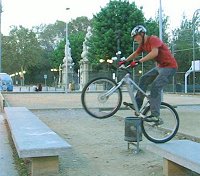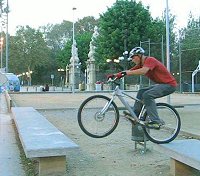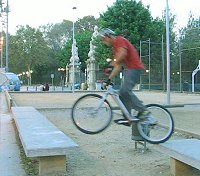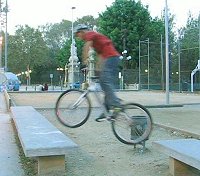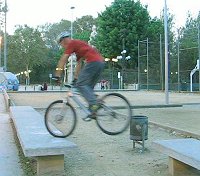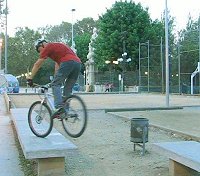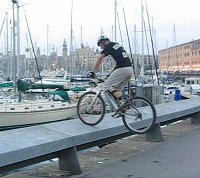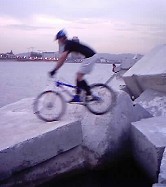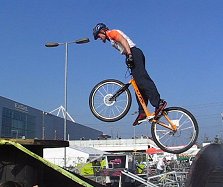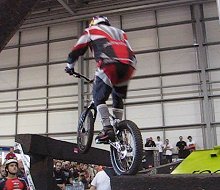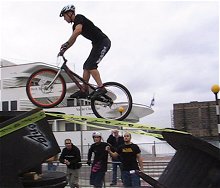 Landing on the front wheel
Landing on the front wheelThis is really a sophisticated move. The body weight shifting is a bit like in the roll-over climbing technique, jumping in full extension on the good pedal, and then throwing the shoulders forwards and pulling the bike with you. But on top of that, you must push on the handlebars to force the landing on the front wheel as soon as possible, and carry on rolling on the front wheel until the rear wheel has cleared the gap and has some grip on the obstacle.
